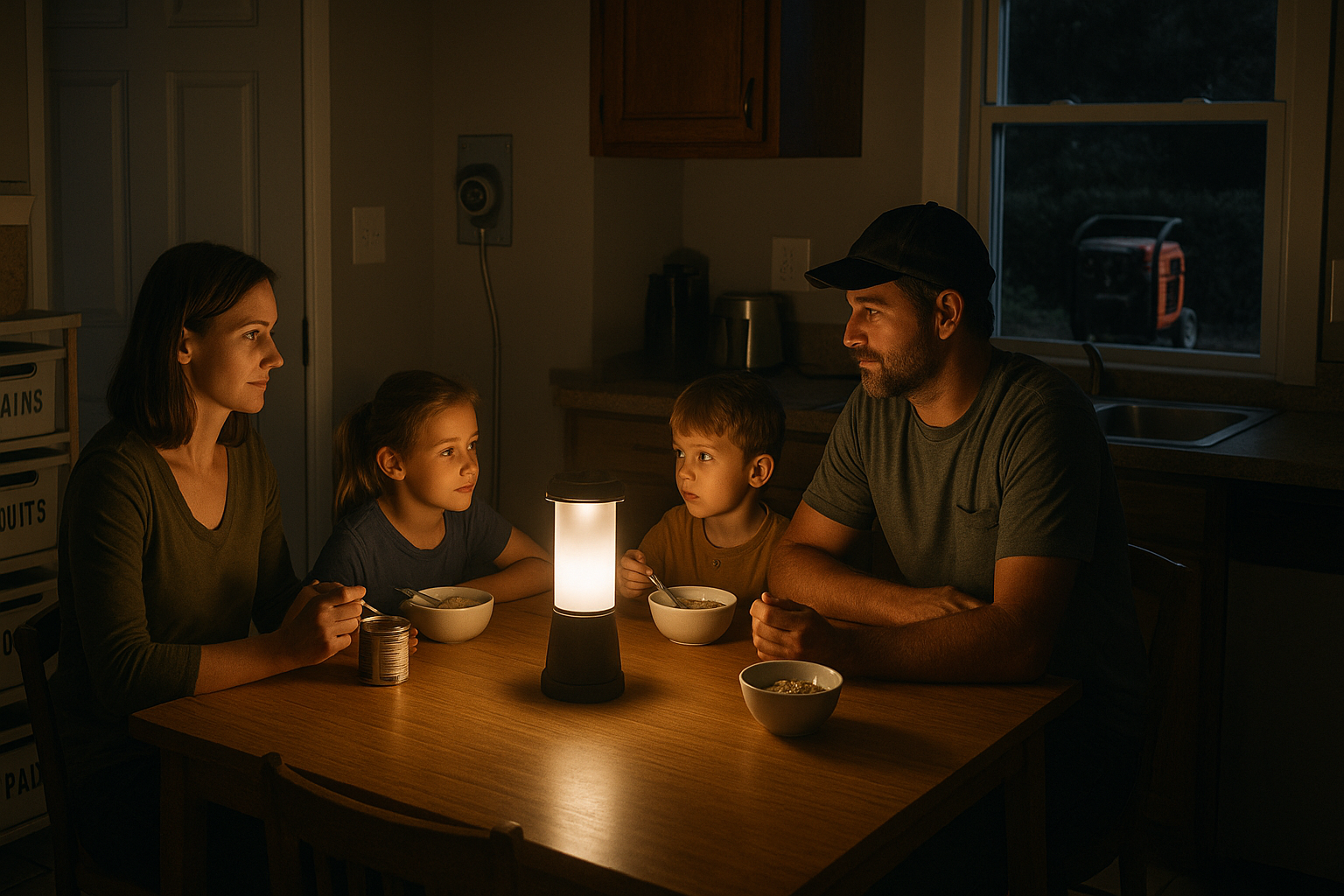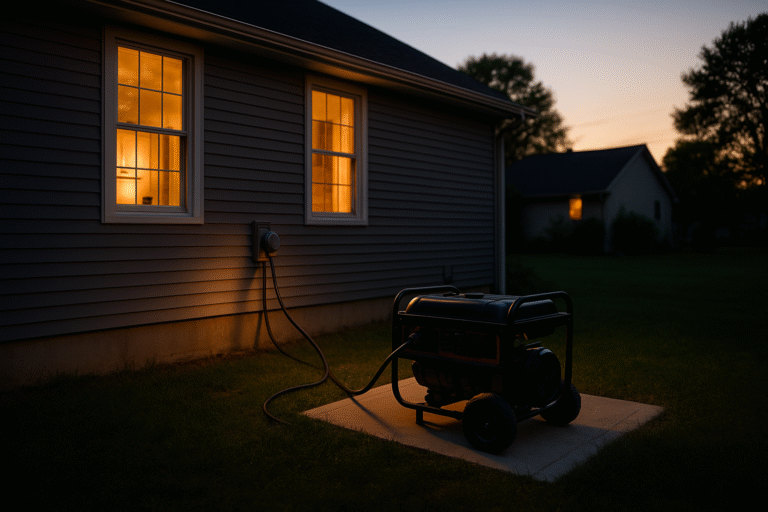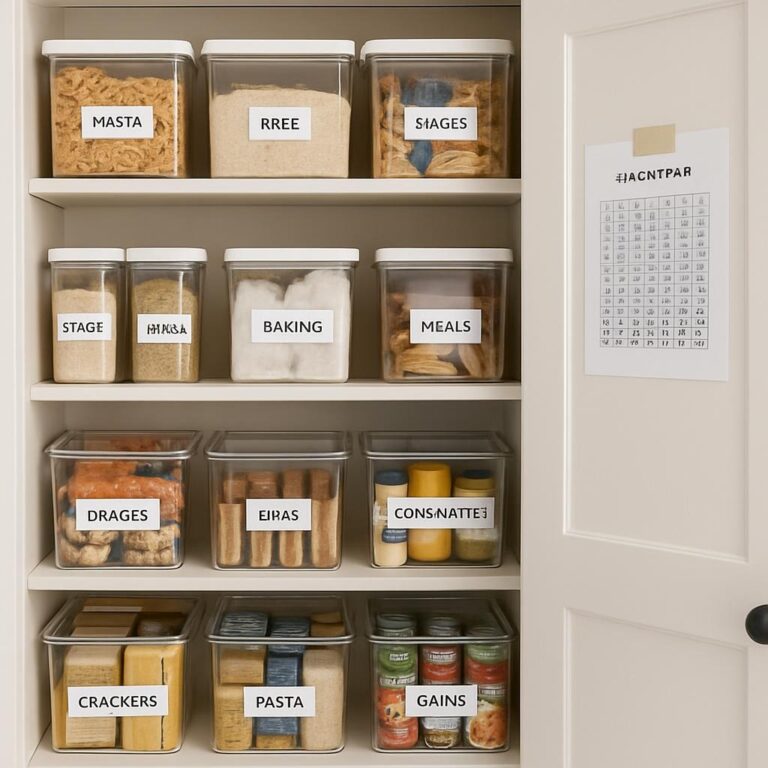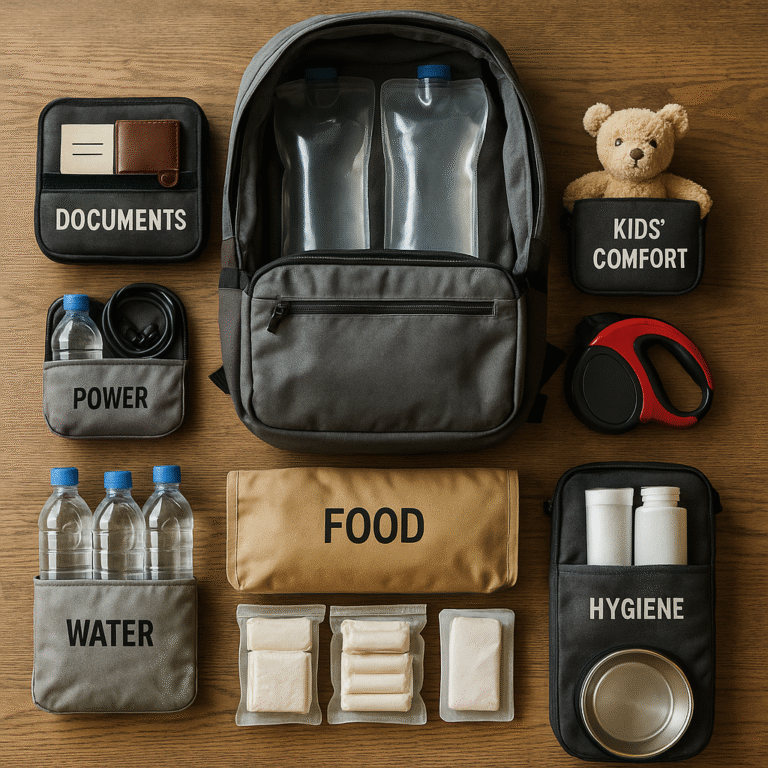How to Live Without Power for 72 Hours: A Family-of-Four Pantry and Backup Plan
A reliable outage plan starts with clear objectives: normal meals, steady hydration, short windows of household power for essential circuits, and a calm routine that holds for multiple days. This scenario outlines a practical three-day playbook that can be copied and adapted. The approach uses a repeating pantry cycle, a minimal cooking kit, a brief load plan for generator sessions, and a few simple visuals that remove guesswork when the house is dark and people are tired.
How to Live Without Power: Day 0 preparation
Draft a three-day meal cycle that repeats without strain. Breakfast uses oats with fruit or granola with shelf-stable milk. Midday meals use protein pouches with crackers and a vegetable cup. Evenings use ready rice with chili or soup, which can be eaten cold or warmed on a compact stove. Print the cycle and tape it to the pantry door. Label shelves with large, high-contrast names for grains, protein, fruits, hydration, and comfort, and set an eat-first bin at the front to prevent waste and guide rotation.
Create a one-page load plan for generator runs. List the circuits that must be energized for brief windows, such as refrigerator, freezer, well pump, a small lighting branch, and possibly a single outlet for chargers. Estimate wattage so sessions stay short and focused. Introduce the plan to anyone who may handle the switch so the sequence is consistent every time.
The diagram below shows a simple example. The table organizes circuits and approximate wattage so heavy loads can be batched without tripping protection, then shut down as soon as tasks are complete.
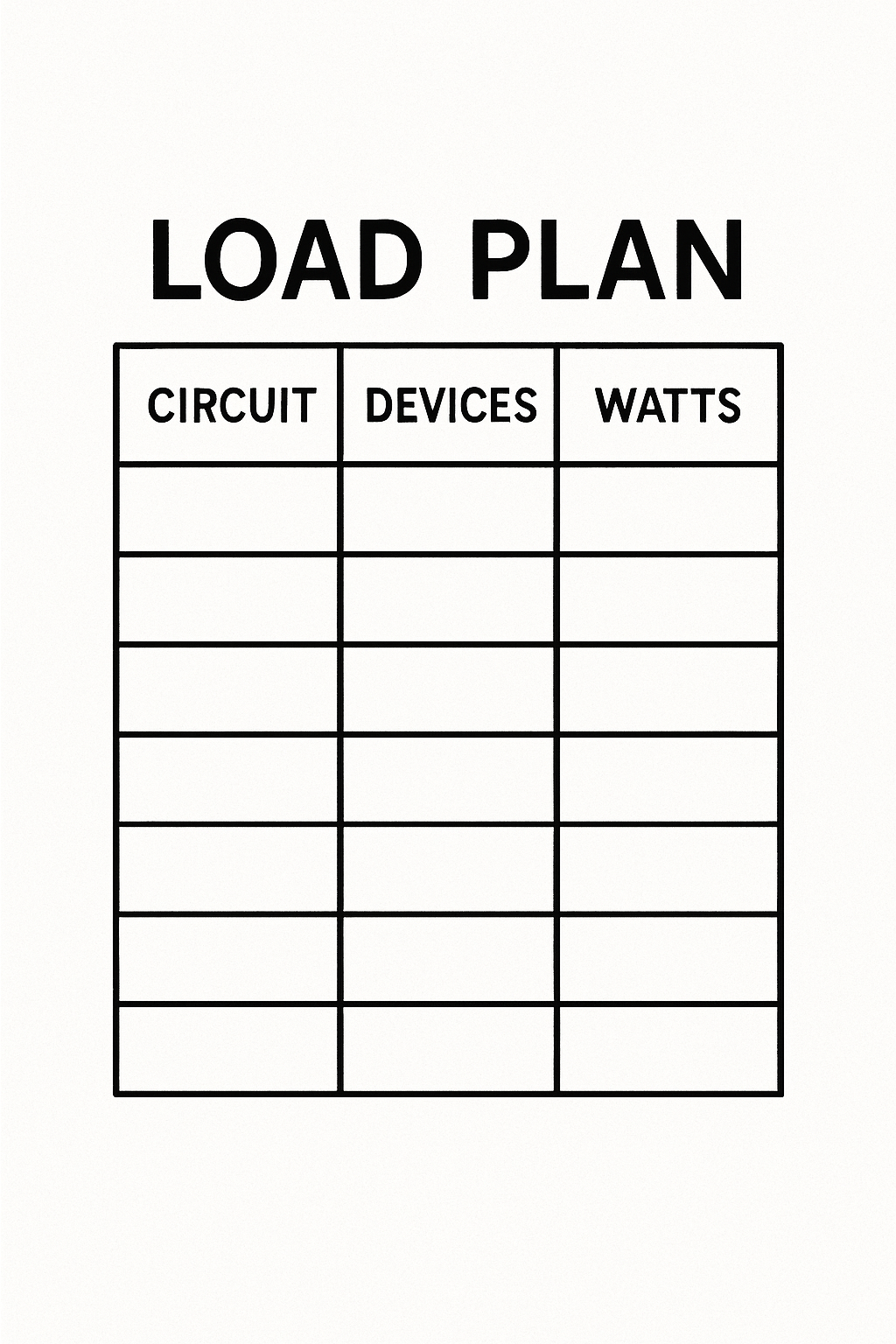
Day 1 playbook
Begin breakfast without conversation. Overnight oats with a fruit cup require no fuel and protect perishables for later. A 20,000 mAh power bank covers early phone and radio charging while weather updates are monitored. By midday, a temperature rise in the refrigerator usually requires the first generator session. Site the unit outside on a stable pad, direct exhaust away from openings, close doors and windows inside the home to reduce noise and fumes, then energize only the circuits on the plan. The refrigerator chills, the freezer stabilizes, several gallons of water are drawn from the well, and the lighting branch covers food handling and checks around the house. Shut down promptly when tasks are complete.
Lunch uses protein pouches with crackers and applesauce. Dinner is ready rice with chili or soup. Heating can be done on a compact stove that uses small fuel canisters; this preserves generator runtime for cooling and water. A modest treat after dinner maintains morale for both adults and children and helps the routine hold through the evening.
Day 2 playbook
Rotate to granola with shelf-stable milk for breakfast. Repeat the short generator session at a similar time. Batch heavy loads again, cool the refrigerator, stabilize the freezer, and refill a five-gallon water jug. With a written load plan visible, the sequence becomes faster and quieter. Fuel consumption drops, and neighbors experience less overall noise. Lighting habits matter throughout the day. Headlamps and small lanterns reduce the temptation to energize large lighting branches between sessions.
Pantry labeling keeps decisions simple. The eat-first bin surfaces items with nearer dates; this prevents waste and speeds meal assembly in low light. Device power benefits from a two-bank rotation. One bank remains in service while the other stays on deck, fully charged, so communications and photos for documentation do not compete for outlets during generator windows.
Hydration targets stay visible with a written tally. The grid below is a compact example for a family of four; it helps maintain three liters per person per day without guesswork or over-rationing.
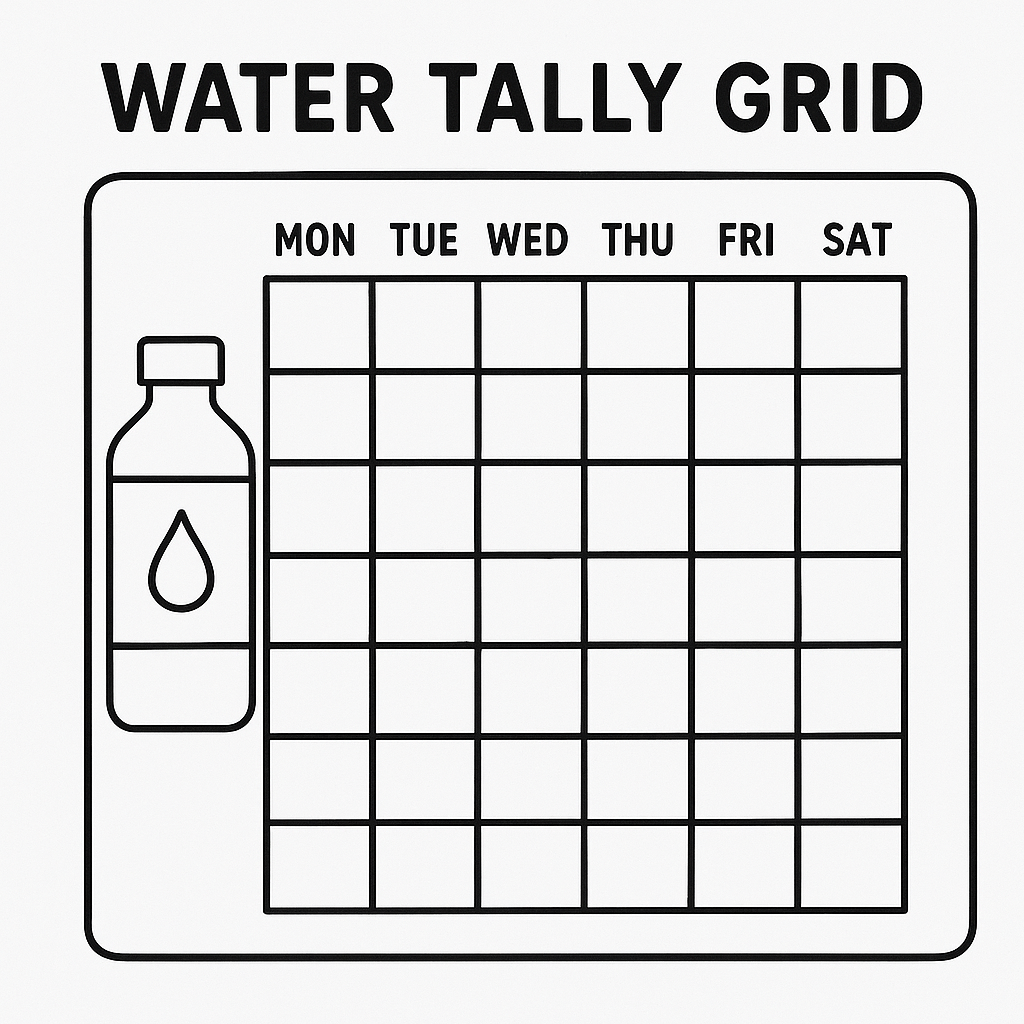
Day 3 playbook
The cycle repeats once more. The generator run follows the same sequence and timing. The refrigerator and freezer remain within safe ranges, a small lighting branch covers necessary work, and phones and radios stay charged from stored power. When neighborhood lighting resumes, the pantry should retain a buffer day. This indicates the plan met its objectives without exhausting reserves.
What works
Clarity and repetition are the strongest features of this approach. A printed three-day meal cycle eliminates decisions when people are tired and reduces shopping friction before a storm. Shelf labeling transforms a dark pantry into a predictable workspace; large category signs and an eat-first bin remove hesitation. Short, batched generator sessions deliver essential cooling and water with less fuel and less noise. The written load plan keeps those sessions brief, which improves carbon-monoxide safety and neighborhood comfort. A water tally posted at the pantry door keeps targets visible and avoids both underconsumption and waste. Small morale items preserve a sense of normalcy, which helps the plan hold steady during long hours.
Common challenges
The first generator session often runs longer than necessary when loads are mixed without discipline. This is corrected by energizing the refrigerator and well pump first, adding only the lighting and a single outlet branch as needed, then shutting down on time. Lighting habits can erode as fatigue mounts. Headlamps and directed task lights work well, and a simple rule, lights off on exit, protects battery inventories and prevents unnecessary draw during generator windows. Cord clutter reduces safety and slows work when extension cables are not staged. A dedicated bag with heavy-duty cords, splitters, tape, and gloves solves this reliably and lowers risk around doors and walkways.
How to adapt
Households vary, yet the structure remains the same. Mount a half-page load card near the transfer switch with circuits and wattages so anyone can run the same sequence confidently. Create a labeled cord kit by length and purpose for faster staging. Keep two power banks in rotation; one in service and one at full charge in the go-bag, so phones and radios do not compete for limited outlets. Extend the pantry map with two additional dinner variations to support longer events. A pair of shelf-stable sauces or spice packs prevents menu fatigue without adding complexity to the plan.
Practical takeaways
Write the plan and post it where it will be used. A single sheet for meals, water, and generator loads removes uncertainty when attention is divided. Batch heavy electrical tasks, then shut down; sessions are quieter, safer, and more fuel efficient. Make next actions obvious with labels, tallies, and short checklists, since simple visuals reduce friction and keep the routine consistent during multi-day outages. Maintain a small comfort layer with familiar foods, because a calm routine is as valuable as calories and watts when the grid is down.
